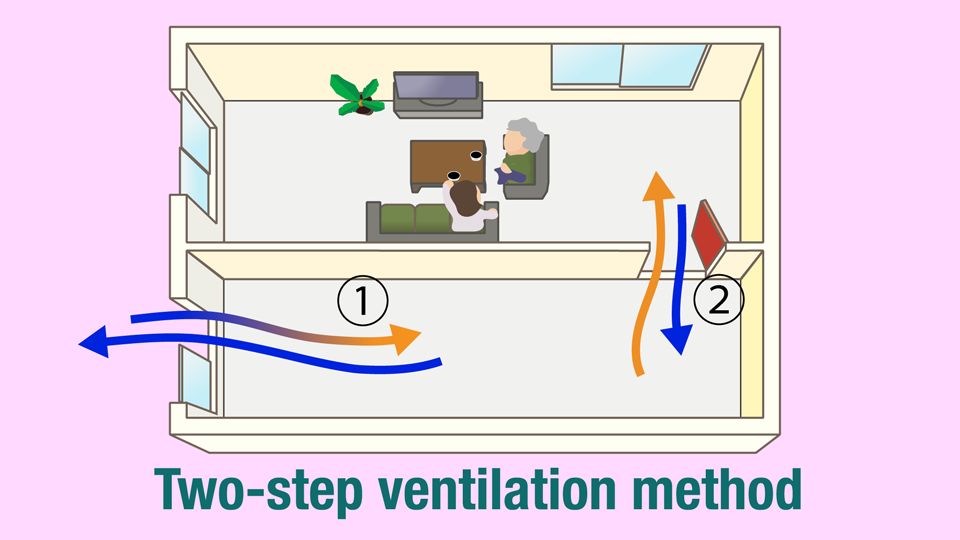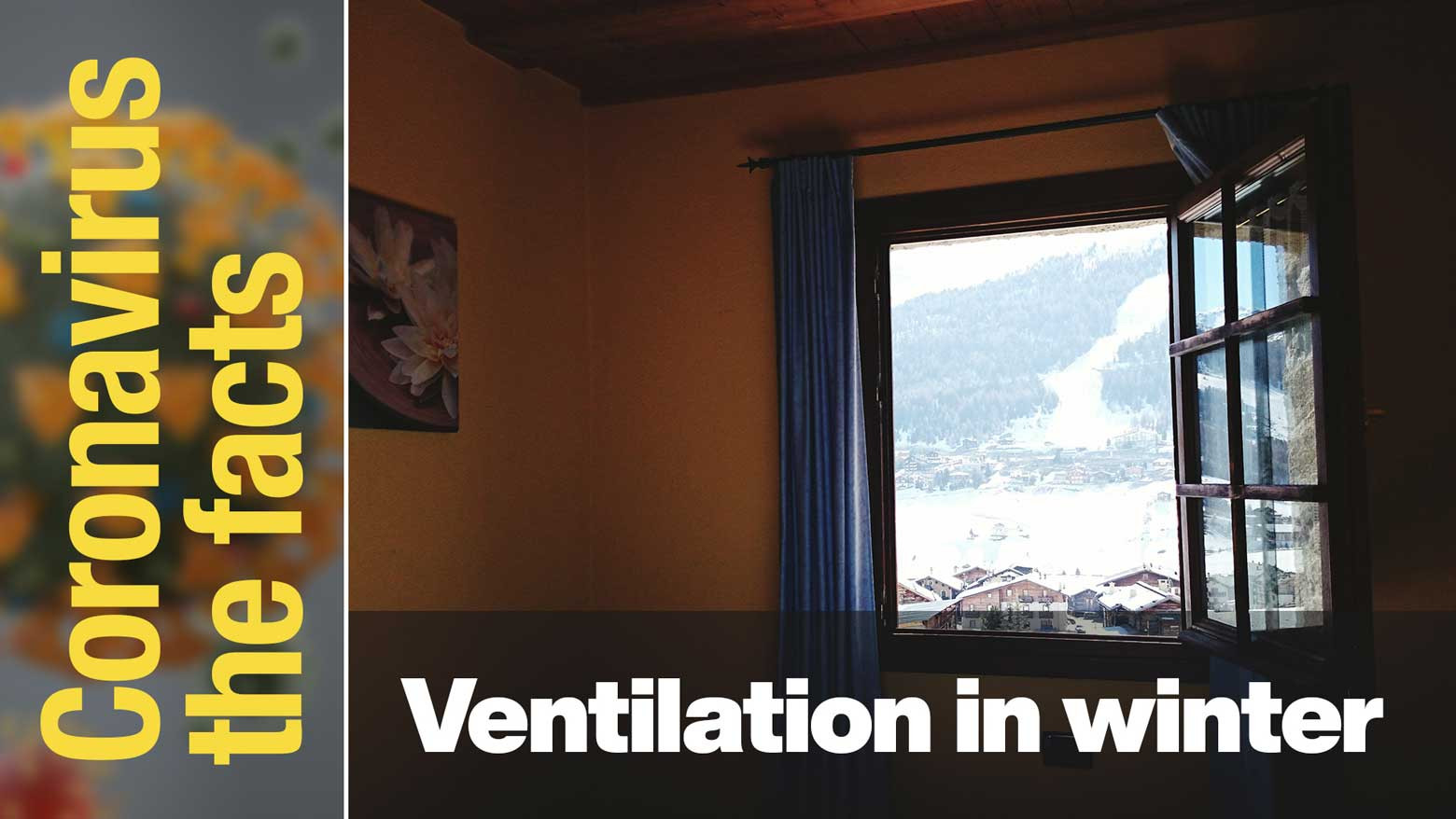This is part 64 of our coronavirus FAQ. Click here to read other installments: #Coronavirus the facts. Find the latest information and answers from experts on everything COVID-19.
Two-step ventilation method
Hokkaido University Professor Hayashi Motoya, who developed proposals for ventilation methods at a health ministry body, gave us advice on how to ventilate rooms while staying warm.
Prof. Hayashi says we really feel it when cold air comes directly into spaces like classrooms or bedrooms. He recommends a two-step ventilation method to moderate that chill. First, allow outside air into hallways or unused rooms to warm up the air with the heat of the whole building. Next, open windows and doors that lead to the rooms we are using to let the warmed-up air into these rooms and enable us to ventilate living spaces without getting cold.

Keep windows open a little when using an air-conditioner
The health ministry recommends we open all windows for ventilation twice every hour. But doing so on cold, snowy days in winter may be very uncomfortable.
Prof. Hayashi recommends keeping windows open a little while leaving the air conditioner on. This way, we can keep our rooms ventilated continuously without causing a drop in temperature. Also, some buildings have around-the-clock automatic ventilation systems that circulate all the air without opening windows.
Maintain humidity levels
However, Prof. Hayashi warns that a room's humidity will drop if we keep the windows open. He says it is essential to maintain a certain humidity level, given that low humidity facilitates easier transmission of viruses.
He says we still don't fully know how humidity affects the new coronavirus but, generally speaking, low humidity weakens the functioning of the mucous membranes of the throat, making humidifiers useful in maintaining proper humidity levels.
This information is accurate as of Nov. 27, 2020.
